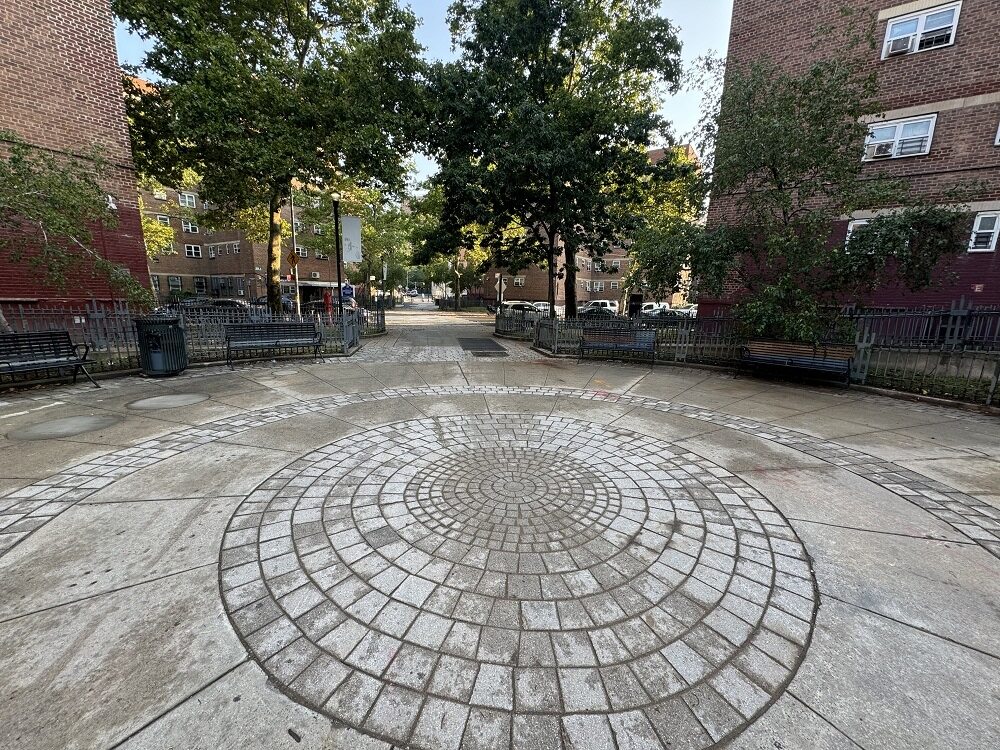Paving & Curbs (Non-vehicular Areas)

Description
- Paving is used to delineate paths for resident and staff travel. Paving is used for walkways throughout developments connecting parking areas, sidewalks, and seating areas to buildings. Paving is used for vehicular pathways; paving is also used for recreational areas. Whenever paving is used, preference is for more porous paving solutions that help reduce hardscapes in developments and aid in site drainage. Paving should be designed with resident input for colors and patterns with preference for variation to help create a distinct character for individual campuses and developments. Materials for paving are asphalt, concrete, stone, rubber, and porous bound materials.
Baseline
- Design pathways that are convenient, intuitive, and enjoyable. [CCG]
- Circulation on and through NYCHA campuses should be clearly defined, appropriately sized, and safe for pedestrians and cyclists while balancing vehicular access needs. When combined with other design strategies, such as materials, wayfinding, fencing and lighting, pathways can be convenient and enjoyable means to connect people with their destination. [CCG]
- Internal pathways should be designed with consideration of who is using them and for what purpose, to prevent conflicts and create a system that works for all the activities throughout a campus. [CCG]
- Utilize a variety of materials to reinforce a sense of place. [CCG]
- The palette of materials used throughout a campus should be visually engaging, durable and easy to maintain. Materials should support accessibility for people with disabilities, children, and seniors. Material selection affects the way spaces may be used. For instance, a paved space can better serve as an area for a children’s game of double-Dutch, while a grassy space is more conducive to picnics. Adding colors, textures, or similar materials in different patterns help achieve visual variety and differentiate adjacent areas. [CCG]
- NYCHA has moved away from asphalt paving for several reasons, including reduction of the “heat island” effect. Instead of asphalt, designers are urged to use concrete pavers for walkways, vehicular access and parking areas, seating areas, building entrances, and gathering areas.
- Only use asphalt paving for basketball courts and playgrounds. Safety surfacing or surface color paint can be installed in conjunction with asphalt paving.
Stretch
- Designers are encouraged to use light-colored, high-albedo materials, with a minimum solar reflectance of 0.3, over at least 50% of the site’s paved area.
- Use of porous material to aid in site drainage, are encouraged for sites in high flood risk zones or if project budget allows the use of these landscape materials.
Strategies

Promote Safety and Security of Residents & Staff

Optimize Performance, Operation & Maintenance of Buildings, Systems & Assets

Ensure Accessibility & Inclusion

Innovate Adaptive & Resilient Solutions
Last Updated on January 8, 2025 at 4:38 pm
Downloads and Data
Details

















